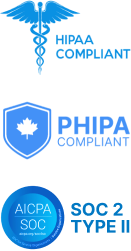Home > Blog > Behavioral Health Diagnosis Codes in 2025: A Complete Guide
Behavioral Health Diagnosis Codes in 2025: A Complete Guide
Author: Adesuwa Olajire, Clinical Psychologist
Have your progress notes written for you automatically
Behavioral health diagnosis is constantly evolving as new trends unfold yearly. The advent of new research has brought about changes to behavioral health codes. These codes are essential in the classification and treatment of mental health conditions.
One crucial challenge faced by mental healthcare providers is ensuring that fees for services are paid in a timely manner. Billing and claims can however be complicated as insurance companies require proof for services provided to clients. Mental health providers are thus required to include these diagnosis codes on each submitted claim.
The aim of this article is to provide a comprehensive guide to behavioral health diagnosis codes in 2025. This will enable you to stay up-to-date with the current trends.
What are Behavioral Health Diagnosis Codes?
Behavioral health diagnosis code is a universal language. They are codes used by mental healthcare providers, insurers, and researchers to communicate diagnosis. They can simply be seen as a series of letters and numbers that describe various mental health conditions.
Behavioral health diagnosis coding comes from two major sources. They include, the International Classification of Diseases (ICD) and the Diagnostic and Statistical Manual of Mental Disorders, Fifth Edition, Text Revision (DSM-5-TR). The ICD was provided by the World Health Organization (WHO). It is used universally to report or record physical or mental illnesses. The ICD, eleventh edition (ICD-11) is set to replace the ICD tenth edition (ICD-10). But, most mental health practitioners still use the ICD-10.
Chapter 5 (F00-F99) of the ICD-10 classifies mental and behavioral disorders. It consists of mental conditions like depression, anxiety, schizophrenia, and personality disorders. Each code consists of about three to five characters. The first character denotes the category to which the disorder belongs to. This is followed by the specific diagnosis.
The DSM-5-TR is the gold standard for diagnosing mental health disorders. The DSM-5-TR can be used for diagnosis coding as it corresponds with the ICD-10-CM (Clinical Modification). You may need to find the corresponding ICD-10-CM code for each diagnosis in the diagnosis coding system.
It is important to state that the ICD-10 and DSM-5-TR are not identical diagnosis tools. This is due to the differences in the coding of certain conditions. Thus, ICD-10 is designed to be used across diverse healthcare systems worldwide. The DSM-5-TR on the other hand is personalized for clinical settings in America.
List of Common Behavioral Health Diagnosis Codes in 2025 and Their Corresponding Conditions
The table below shows the commonly used behavioral health diagnosis codes by mental health practitioners. It compares ICD-10 and ICD-11 diagnoses for behavioral health conditions.
Importance of Accurate Diagnosis in Mental Health Treatment Planning
Proper coding for behavioral health conditions is crucial in order to develop effective treatment plans. Asides this, diagnosing accurately ensures that clients receive the best care for their specific conditions.
For instance, a client with F32.0 (major depressive disorder, single episode, mild) may require an entirely different treatment approach as compared to a client with F32.1 (major depressive disorder, single episode, moderate). Notice how similar the two diagnoses are, but the treatment techniques are expected to be entirely different. Hence, tailoring treatment to an accurate diagnosis tends to improve client treatment outcomes.
Behavioral health diagnosis codes are used by insurance companies to determine the level of treatment for health coverage. Due to this, coding incorrectly can result in denied claims or even underpayment for behavioral health services offered. Mental health therapists need to use these diagnosis coding to provide better client-centered services.
Advantages of Using ICD-10 Behavioral Health Codes in 2025
1. The nature of the ICD-10 is very complex. Thus, it requires intensive documentation of client conditions and symptoms. Applying these codes translates to thorough and more accurate medical records. This is because they are quite beneficial to clients and healthcare providers.
2. ICD-10 provides exhaustive codes that allow for precise diagnosis and planning of treatment. This is aimed at improving the quality and outcomes of client care.
3. ICD-10 codes also allow researchers to carry out in-depth studies and to analyze health information. They can be very useful in identifying trends in behavioral health conditions. Not only that, these codes can ensure effective treatment and interventions.
4. ICD-10 codes are often required by insurance companies and payers for mental health professionals to receive payments for services rendered. As a behavioral health provider, it is expedient you adopt accurate coding. This ensures that you are appropriately reimbursed for services you’ve rendered.
5. Monitoring and responding effectively to mental illnesses is important to the health of the general populations. Consequently, ICD-10 diagnosis coding can track the prevalence of various mental health conditions. This can be useful in planning policies targeted at reducing the burden of mental health illnesses.
Challenges of the ICD-10 Behavioral Health Diagnosis Codes
1. The growing number of diagnosis codes makes it hard for mental healthcare providers to learn and implement the new system. This can lead to errors or disorganizations during the transition period.
2. Selecting the correct diagnosis may require more time and effort due to the specificity of ICD-10 codes. This can increase administrative burdens on behavioral health clinicians.
3. Some behavioral health providers may choose codes that yield higher reimbursements. This can occur even where the service does not match the code requirements.
4. Implementing and maintaining ICD-10 diagnosis coding can be expensive for healthcare providers. This is due to training requirements, and system upgrades required in adopting the diagnosis coding.
5. Another challenge of the ICD-10 diagnosis coding is the issue of client confidentiality. The detailed information provided in ICD-10 codes may raise concerns about client privacy. This is because they may potentially reveal sensitive client information.
Conclusion
The introduction of behavioral health diagnosis coding systems such as the ICD-10 has allowed practitioners to diagnose accurately. Given the expansion of the mental health field, this behavioral health coding guide will empower mental health professionals in their practice. This necessitates the need for mental health practitioners to stay informed about changes to these codes.
FAQs
What is the Difference Between ICD-10 and ICD-11 Codes for Behavioral Health Diagnosis?
In terms of the number of codes, ICD-10 has 14,000 while ICD-11 has over 55,000 codes. ICD-11 also has a more detailed categorization and structure than ICD-10. In the ICD-10, there are several personality disorders, but in ICD-11, personality disorder is listed as a single diagnosis. Also, it is expected that the ICD-11 would be easily integrated into electronic health record (EHR) platforms.
Are Behavioral Health Codes the Same Worldwide?
Behavioral health codes are not the same globally. They can vary by country due to differences observed in healthcare systems, diagnosis networks, and also terminologies. While both the ICD and DSM aim to ensure the standardization of diagnosis and classification of mental health conditions, they possess varying structures, coding systems and conceptual variances in their categorizations. While the ICD-10 is used in many countries, the U.S. recently adopted the ICD-10-CM (Clinical Modification) for medical diagnosis and billing purposes. Some facilities in the U.S. also use the Current Procedural Terminology (CPT).
How do ICD-10 Codes Affect Insurance Reimbursement?
ICD-10 codes affect insurance reimbursement in various ways. When used correctly, ICD-10 codes ensure that claims are processed efficiently, leading to less claim denials or delays in payment. It also helps insurers to understand the severity and complexity of behavioral health treatments.
How Can Clients Access Their ICD-10 Diagnosis Codes?
Clients can have access to their ICD-10 diagnosis by obtaining a copy of their medical records from their mental healthcare providers or facility. Clients can even request for these records in person, via their client portal or make a formal request in line within the policies of their healthcare facility. Once they have the records, they can analyze the codes using the help of a medical dictionary or online resources to understand their specific diagnosis. However, it is very important to consult the help of a mental healthcare professional to adequately understand your diagnosis.
Which Resources are Available for Mental Health Professionals To Learn About ICD-10 Codes?
Mental health professionals who are interested in learning about ICD-10 diagnosis codes can do so via online platforms like WebPT, Centers for Disease Control and Prevention (CDC) and 3M. These platforms offer training modules, webinars and guidelines. Additionally, professional organizations such as the American Psychological Association (APA), the National Alliance on Mental Illness (NAMI) and the American Counseling Association (ACA) provide courses and certifications. Also, ICD-10 comes with manual, handbooks and specialized software to support mental health professionals in their practice.
Can ICD-10 Codes Be Used Alongside Other diagnosis Tools Like the DSM-5-TR?
Absolutely! Most mental health therapists reference both the ICD-10 for billing and DSM-5-TR for detailed clinical assessment and planning of treatment. This dual use provides a more in-depth understanding of the client’s condition. It also ensures that diagnosis information is effectively communicated across various medical settings and insurance systems. However, it is crucial to state that while the two can complement each other, they serve entirely different purposes and should not be used interchangeably.
Disclaimer
All examples of mental health documentation are fictional and for informational purposes only.
Have your progress notes written for you automatically
See More Posts
Company
Product
Legal
Contact us
Who we serve
Psychotherapists
Join us







